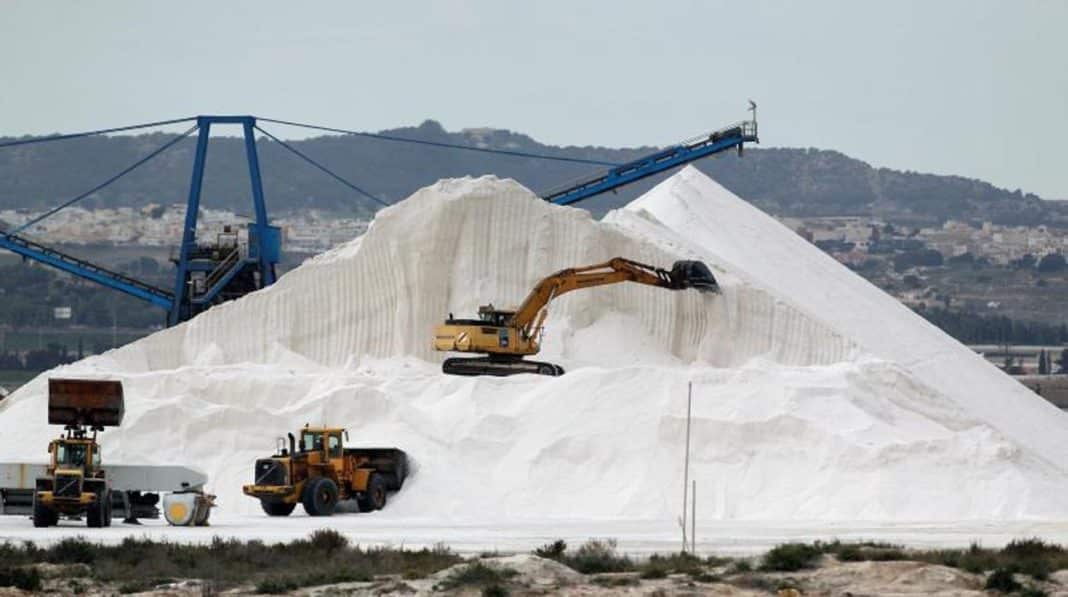- The salt lakes will produce 550,000 tons of salt thanks to the record heat this summer
Despite the start of the campaign being delayed to the end of August due to spring rains, high temperatures have resulted in a reduction of the volume of water in the lagoon, causing it to become saturated with brine with a layer of 10 centimetres of salt accumulating at the bottom
As such, the company Salins España, expects to produce at least 550,000 tons of salt during the extraction campaign that has just begun.
The salt workers usually start production in August and conclude in June of the following year, allowing a month of maintenance work in July, but the high temperatures have seen the brine saturation process speed up, reaching 300 grams per litre of water as the salt sets until it falls to the bottom of the lagoon.
The high evaporation has reduced the volume of water in the wetland, concentrating its average depth to one metre and fifteen centimetres, which is usual, compared to the more than one and a half meters that the pink lagoon reached at the end of spring due to the period of continuous rains.
The ideal volume of extraction is 700,000 tons and in some historical campaigns, most notably during the 70s, it actually reached a million.

The DANA we experienced in September 2019 flooded the facilities again and the storm Gloria of January 2020 ended up finishing off that harvest. The rainy springs of 2021 and 2022 did not help to recover production and the company resorted to the receipt of salt from other salt mines of the Salins group in Europe and Africa.
However this wet cycle has made it possible for the contribution of fresh water to consolidate one of the largest nesting populations of flamingos in Spain. The flamingos nested for the first time in the pink lagoon in 2020, and they have returned to the lake in both 2021 and 2022.
Now Salins Spain, the subsidiary of the French multinational, is hopeful that a new episode of torrential rains does not disrupt these forecasts.
Despite these difficulties, the company has always maintained a stock of 200,000 tons of salt, and will continue to do so to face any change in forecasts and meet all or its customers needs. The company director said that he does not anticipate the arrival of boats from other salt flats to Torrevieja during the current campaign.
Most of the salt is used in bulk for de-icing roads in Europe and Spain, but there are also items of food salt, including fleur de sel, together with its use by chemical industries.





